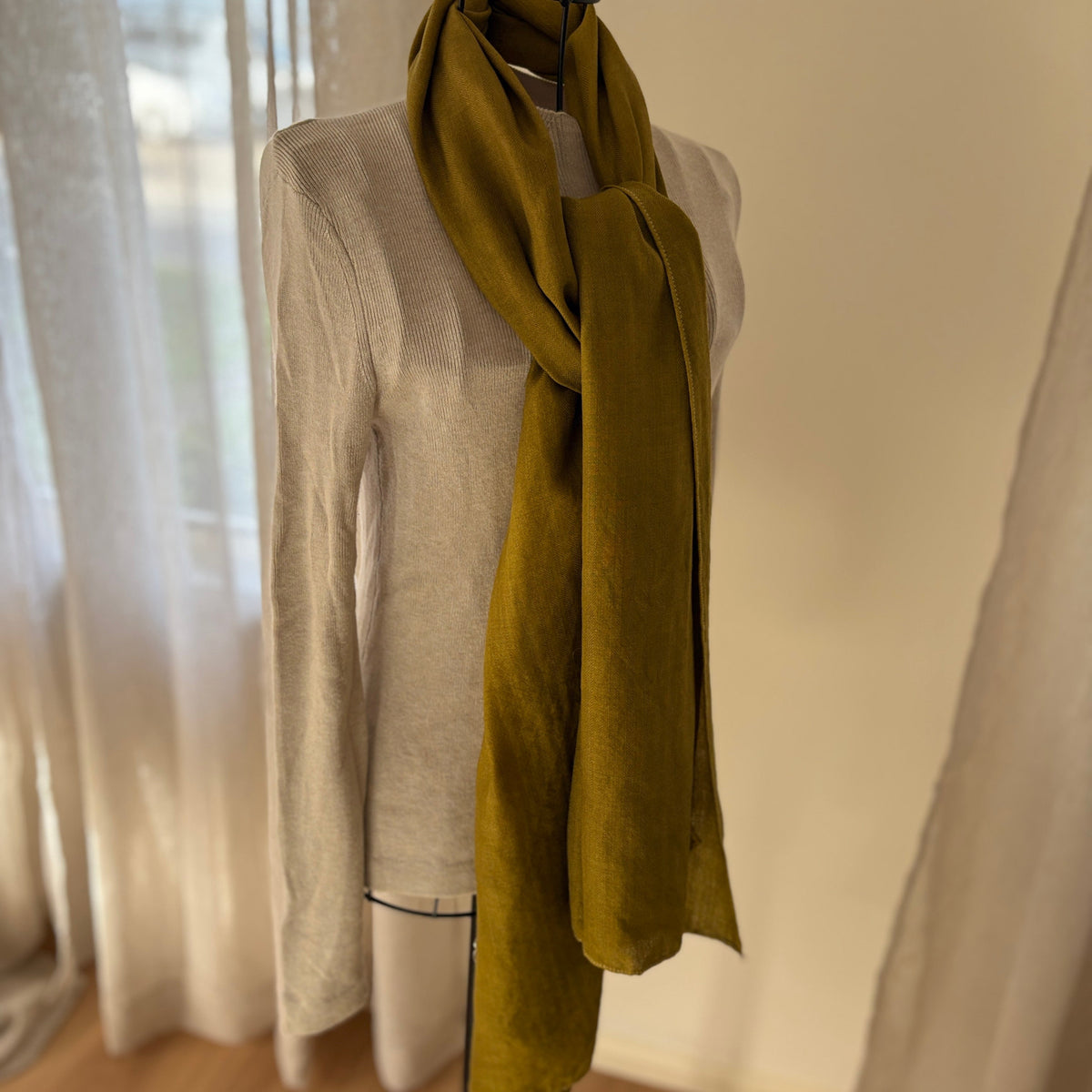
Upcycling With Botanical Dyes for Beginners
|
|
Time to read 7 min
|
|
Time to read 7 min
Our dye kits are suitable for beginners. You can also purchase a dye kit bundled with a lightweight wool and silk shawl.
The kits come with instructions, and this blog explains some of the principles behind the dye techniques.
The basic process is:
Table of Contents
You cannot use botanical dyes with fully synthetic fabrics. Polyester, acrylic and nylon do not take up dyes well. Polycotton works but the results are variable.
‘Semi-synthetic’ Fabrics include rayon, tencel, lyocell, bamboo and so on. These fabrics are manufactured using an energy and chemical intensive process. They are basically derived from plants (wood, bamboo) And hence they will take up botanical dyes because they're technically natural fabrics.
The best fabrics to use are the fully natural fabrics, for example wool, silk, cotton, linen and hemp.
To dye fabrics with botanical dyes, you must first treat the fabric with a mordant. If you do not use a mordant the fabric will not bind to the dye. The most commonly used mordant is alum (aluminium sulphate).
There are a range of other mordants that can be used. If you research the topic, you will see that alum is the best mordant for wool and silk (known as protein fibres as they come from animal sources).
Cotton, linen and hemp are known as cellulose fibres because they come from plant sources. These fabrics can also be mordanted with alum. However the best results come from using aluminium acetate or other alternatives.
The kits that we sell only contain alum (aluminium sulphate) because we consider it the safest and easiest to use. Other alternatives come as a fine powder that can be a respiratory irritant and release strong fumes when mixed with water. If you prefer to use these stronger mordants for your cellulose projects, you can purchase these from Kraftkolour Online.
For an even better result on cellulose fibres you can add in one extra step – the use of a tannin bath before mordanting. See Kraftkolour online for information about tannins and to purchase tannin powders.
The weight of the fabric determines how much mordant and dye to use. If you purchase our kits, we have weighed out the ingredients for you. The only reason you might change the quantities is if you are working on a very small project, in which case you might split the ingredients and save some for another project.
If you are working with the raw ingredients and you must weigh them out yourself, you will need some basic maths skills and a calculator. Botanical dyes are calculated as a percentage of the weight of the fibre (known as the WOF). For example, if you have 100g of fabric and you want to dye it at 30%WOF, you would need 30g of dyestuff.
You might think that the concentration of the dye in the water is critical, but it is not. The most important thing is that you have enough dye for the amount of fibre that you have. You must also have enough water for the piece to move around freely and not get squashed up.
The particles of dye will find the alum that is on the fabric and they will bind together. This will happen regardless of how much water you have in the dye pot. Obviously, this principle only works up to a point. If you had a swimming pool full of water, the fabric and the dye will not be able to find each other.
Whether you are working with second-hand fabric or brand new fabric, you must wash it first. Brand new fabrics contain coatings added during the manufacturing process. Second-hand fabrics can be stained with food and dirt.
Wool and silk should be washed in a gentle washing solution (e.g. wool wash, softly for delicates). You can use a gentle machine cycle. Do not use washing soda.
Cotton, linen and hemp should be washed in hot water with washing detergent plus a tablespoon of washing soda. To really make sure of it you can wash it more than once.
Dissolve the alum in hot water. Use a large bucket or a large plastic container. Submerge the fabric in the solution. Try to get rid of the large air bubbles that will form. The best way to do this is to put a glove on and squeeze it and submerge it. Weigh the fabric down with a plastic or glass container. Leave for four hours minimum, or overnight. Move the fabric around from time to time while you are awake.
Don't try to mordant for any less time than four hours. This process determines the strength of the dye result, and its ability to withstand washing and fading in the sun.
It might seem counterintuitive to rinse the fabric after mordanting. Perhaps you are worried that you will wash off the mordant. However, if the mordant is not attached to the fabric by now, it never will be.
Unbound particles of mordant attach to the dye and pull it out of solution. If that happens, it will not be available to bind to the fabric. This is the rationale behind rinsing off the excess alum prior to dyeing.
After all this preparation, you are now ready to dye your fabric. This is not a one size fits all approach. The technique varies depending on the dye and the fabric that you are dyeing. Here here are some general rules about fabrics and dyes that you should keep in mind.
A discussion of every aspect of different dyes is beyond the scope of this short article for beginners. Suffice it to say that as you plan your project you will need a recipe that is specific to the dye that you are using.
Fine herringbone wool silk shawl (75% wool/ 25% silk), mustard
Olive colour dye kit